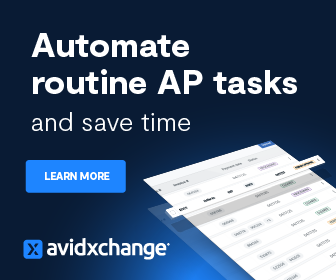As a Controller, you want to ensure financial accuracy while closing the books in the shortest period of time possible. There are often a number of activities that need to be completed before you can call the month a wrap. Typical monthly closing tasks can include account reconciliations, posting of ledger transactions, and variance analysis. If you’re short on staff, you may find yourself and your team working long hours to ensure that everything is done correctly. Over the past decade, a number of software tools and applications have been created with the intention of eliminating time-consuming, redundant monthly close activities. Controllers who are aware of these tools can implement the ones that align well with their company’s current processes. Doing so can substantially reduce the time to close and improve the efficiency of the monthly reporting process. Let’s review a few options for modernizing your accounting department.
Enabling Accounting Automation
Automation tools are often the first step that controllers use to modernize their accounting department. These types of tools typically seek to eliminate manual tasks, such as matching bank transactions with the general ledger. They vary in their complexity and type.
Robotic Process Automation
These types of tools can be thought of as macros. They typically record the process for performing a certain type of activity, such as opening an email or entering a purchase order. Once the process is recorded, the activity can be performed automatically without the need for human activity. However, robotic processes don’t understand accounting, so the end result will need to be reviewed by an individual who does.
Financial Close Solutions
Financial close solutions are built to be managed by the accounting department. They can act as a center for documentation and a record for processes such as journal entries, account reconciliations, and intercompany accounting. There is typically a single location for storing an audit trail. These types of solutions can be very helpful for companies that regularly undergo reviews or audits of their financials.
Intelligent Automation
Intelligent automation tools can be used to improve daily processes, such as applying payments or receipts for the AP and AR departments. Typically these tools are built with the specific business in mind. They can be extremely helpful in that they provide quick insight into the financial health of the company. For example, if management is informed immediately that a customer is overdue on a payment by two weeks, they can take action quickly. This speed stands in contrast to a company that performs a tedious matching process where staff doesn’t realize any payment is overdue for a month.
Continuous Accounting
Once a Controller has implemented accounting automation tools, they can look at continuous accounting options. Continuous accounting involves having books that are updated with regular daily transactions. Reporting is seamless so that at any given point in time, a controller may review financial details to gain an understanding of the company’s performance. If a continuous accounting process is implemented properly, it can result in a shorter month-end close period. Companies using traditional accounting processes use the month-end to post transactions and perform account reconciliations for the entire period. In contrast, companies that have set up continuous accounting check transactions as they are posted throughout the month. By adopting continuous accounting, an accounting department can use month-end close to perform variance analysis and check for anomalies. There isn’t a need to record routine transactions because they would have already been completed when they occurred.
Agile Virtual Accounting
The ongoing pandemic has resulted in many companies moving their staff from on-site offices to remote work. This shift has led to a need for businesses to manage teams virtually. While remote work is a huge benefit to employees who prefer to control their own workspace, it can be difficult for managers to know when work is completed. Thus, there is a need for tools that actively connect managers and their teams. So far, some of the best options have been online meeting tools such as Zoom and Skype. These programs allow people to connect anytime through a website link. Meetings can be held using both audio and video. This approach allows managers and employees to quickly touch base on ongoing projects and tasks. Other tools for managing remote work include shared drives. These tools allow colleagues to collaborate on various projects. They can also save files and documents to the drive for safekeeping.
Get the Full Guide to Modernizing Your Accounting
There are a number of ways for a Controller to speed up the monthly close process without sacrificing the accuracy or integrity of your accounting books. In fact, these tools can improve the efficiency of your accounting department — and lead to a much less overworked accounting department. If you’d like to learn more to improve the processes in your accounting department, check out our free eBook, Modernizing Accounting for Dummies. After reading, you will understand how to:
- Get started with accounting automation
- Complete more work in less time
- Drive effective change management
Click here to download now.
Additional Resources:
Champions of Controllership: Advancing Accounting Despite Disruption
Driving Strategic Value in Finance & Accounting
Make the Move to Modern Accounts Receivable Automation




